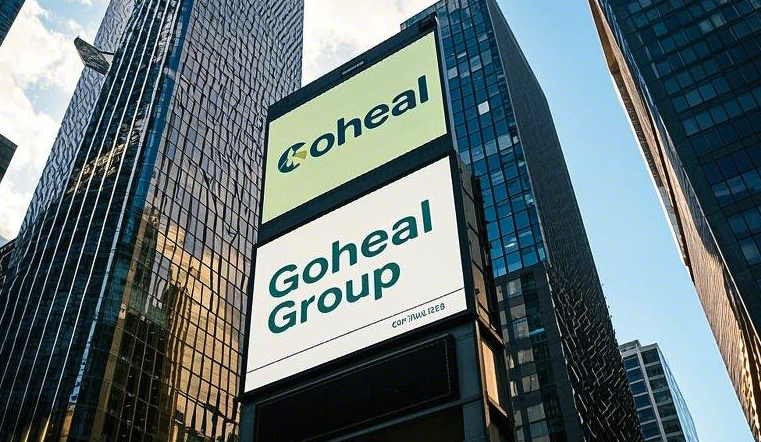"Those who are good at fighting win first and then fight; those who are not good at fighting fight first and then win." In the battlefield of the capital market, what determines the winner is never the on-the-spot reaction, but the preemptive insight and control. When everyone is discussing profit margins, price-to-book ratios, and price-to-earnings ratios, what really determines whether a listed company can "live long and walk steadily" is its ability to perceive risks and its ability to withstand pressure from systemic shocks - in simple terms, whether there is a reliable risk warning mechanism.
You may think, "We are not the risk control department, why talk about this?" But the reality is that risk management is not an exclusive game for the risk control department, but the core of capital operation. People who do not understand risks are destined to pay for invisible pits.

American Goheal M&A Group
In Goheal's actual cases, we have witnessed more than once that those capital operation projects that seemed "calm" on the surface suddenly exploded at some inadvertent link, from the collapse of the technical path to the loss of control of shareholder disputes, from the freezing of assets caused by geopolitical friction to the termination of transactions caused by policy turning points... one unexpected scene after another, in fact, had already laid the groundwork.
At this time, a mechanism of "knowing in advance when the rainstorm will come" is particularly important.
1. Risk is not an "emergency" but a "chronic disease"
If you regard an M&A transaction as a marathon, the risk is often not a sudden 100-meter sprint, but when you accelerate without any defense, old injuries suddenly flare up, shoelaces suddenly loosen, and soles suddenly break. The essence of risk is never "sudden", but "silent".
Once, when Goheal assisted a mainboard listed company in a cross-border acquisition of a Southeast Asian technology startup, everything went smoothly at the beginning of the transaction and there were no financial problems. However, we found in the mid-term scenario deduction link of the project that 70% of the target company's customers were concentrated in a country with unstable political situation. This information was not disclosed in detail in the public report. In less than a quarter, local policies suddenly changed, the customer's orders were suspended, the target company's cash flow plummeted, and the valuation bubble burst immediately.
We triggered the internal "geopolitical change impact model" in time, terminated the investment decision, and also allowed the customer to avoid a crisis that could have caused more than 150 million losses.
This type of "chronic disease risk" is the most dangerous, because they will not tell you "I'm coming" with a gong and drum, but once you neglect it, they will give you a blow at the most fatal moment.
2. Some risks are not hidden in the "black swan", but written in "daily"
The empirical rule of the capital market tells us that 80% of failures actually come from signals that have been exposed long ago.
Once, when Goheal was reviewing a semiconductor company's merger and acquisition plan, it found that its main supplier had compliance disputes three times within half a year. Although it did not directly affect the company, it had already shown the "chain risk" of unstable supply in the industrial chain. Going deeper, we found that the actual controller behind this supplier has been involved in many secret lawsuits, and the risk has therefore escalated rapidly.
Many investors always think that risk is a black swan, an unexpected event that "I can't think of". But in fact, those risks that are enough to detonate the collapse of the entire transaction may be hidden in the KPI fluctuations that you have not noticed, the contract details of the partner, or an originally unnoticed outsourcing business adjustment.
Goheal calls these signals "capital radar waves" and captures "abnormal fluctuations" through big data models and expert scoring systems, thereby establishing a future-oriented, dynamically adjustable risk warning mechanism. The core value of this system is that it can not only remind you that "it may rain", but also tell you whether it is drizzle or an approaching hurricane.
3. The essence of the risk warning mechanism is to set up a "reaction channel" in advance
So, how can a listed company or investment institution really build an effective risk warning system?
In Goheal's practice, we found that an effective risk warning mechanism is often not supported by a "high-end" model, but by a "real response" mechanism design. In short, the early warning mechanism is not the red button on the wall, but a "reaction channel" that allows information to flow and decisions to be adjusted dynamically.
For example: Is there an information integration mechanism across departments and levels? Is a "dynamic early warning threshold" set for key variables? Is a "scenario emergency drill" set for M&A targets? Is there a "non-financial abnormal indicator inventory" every quarter? Is there a red line system that has the authority to trigger the "freeze decision-making process"?
These "soft mechanisms" are more real and effective than any risk control system framework diagram.
In Goheal's M&A due diligence project, we insist on setting up a "red, yellow, and green light mechanism": red light directly stops, yellow light enters the risk council discussion, and green light continues to track. This mechanism not only improves the efficiency of risk identification, but also makes investment decisions more transparent and controllable.
4. Establishing an "organizational consensus" on risk perception is more important than the system
Many companies mistakenly believe that as long as the "technical layer" does a good job of risk control, it will be fine. But the really complex capital operation is those scenarios that "require cross-cognitive collaboration".
A typical scenario is: the finance department thinks the project is fine, the business department feels that the partner is "unreliable", and the senior management makes the decision based on the strategic height. But often the problem is precisely the "vague impression" that is ignored.
Therefore, we emphasize that the risk mechanism is not a process, but a consensus culture. At Goheal, we always insist that risk control is not just a "report" but a "voice" - every project member, regardless of his position, can propose suspension or replay suggestions based on risk clues.
This is not for democracy, but because risk identification is essentially a game of "collective intelligence".
5. Risk management is a "sandbox exercise" without a script
We often lead the team to do a "sandbox exercise" when the project is halfway through: assuming that a certain technological breakthrough of the target company fails, assuming that a certain policy changes overnight, assuming that a certain shareholder suddenly regrets and withdraws investment... Everyone stands in the position of "after the accident" and re-examines the transaction structure and valuation model.
This exercise sometimes makes us overturn all the plans for the previous three months. But it is these "false alarms" that constitute Goheal's most stable investment moat.
The risk warning mechanism does not tell you that nothing will happen in the future, but sets up a tab for "something to happen" in advance, so that even if you step on a landmine, you will not be injured.
The real masters of the capital market are never those who do not fall, but those who can fall with protective gear and get up and rush again.
Written at the end
Today, when uncertainty has become the background color of the market, behind every seemingly calm capital action, risks may have quietly fermented.
Have you ever ignored an inconspicuous supply chain fluctuation in the promotion of an M&A project? Have you ever underestimated the "breakthrough ability" of human variables in shareholder negotiations? Do you think that risk control is only an audit matter, rather than a "core issue" that CEOs, investors and even the board of directors should participate in?
Goheal believes that capital operations without a risk warning mechanism are just castles in the air; and only companies with risk awareness can cross the cycle, see the general trend, and win in stability.

Goheal Group
You are welcome to share in the comment area the "unexpected" you have encountered in investment and capital operations, and how you deal with it? Or do you have any other thoughts and questions about the risk warning mechanism?
We look forward to discussing with you how to live more soberly, more steadily and longer in this capital jungle full of variables.
——Goheal, together with you, understands risks and sees opportunities clearly.
【About Goheal】Goheal is a leading investment holding company focusing on global mergers and acquisitions, focusing on the three core business areas of listed company control acquisition, listed company mergers and acquisitions and restructuring, and listed company capital operation. With its deep professional strength and rich experience, it provides enterprises with full life cycle services from mergers and acquisitions to restructuring and capital operation, aiming to maximize corporate value and achieve long-term benefit growth.